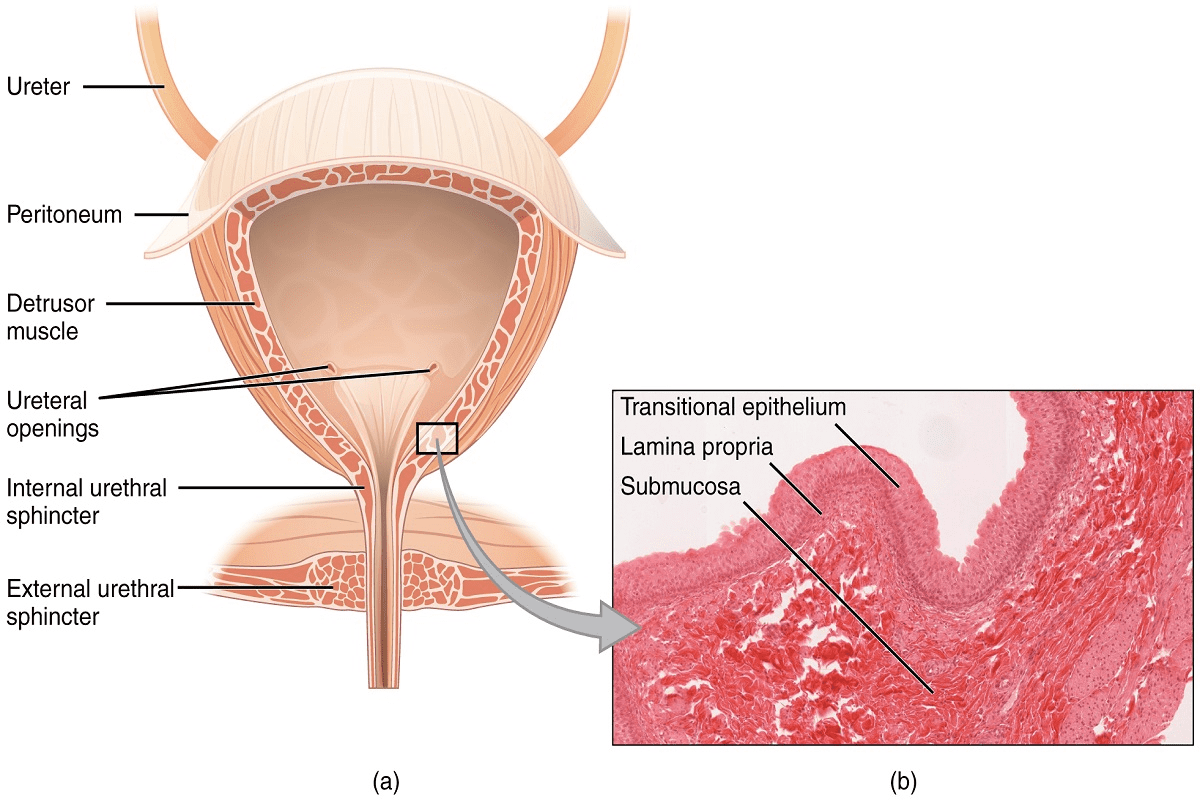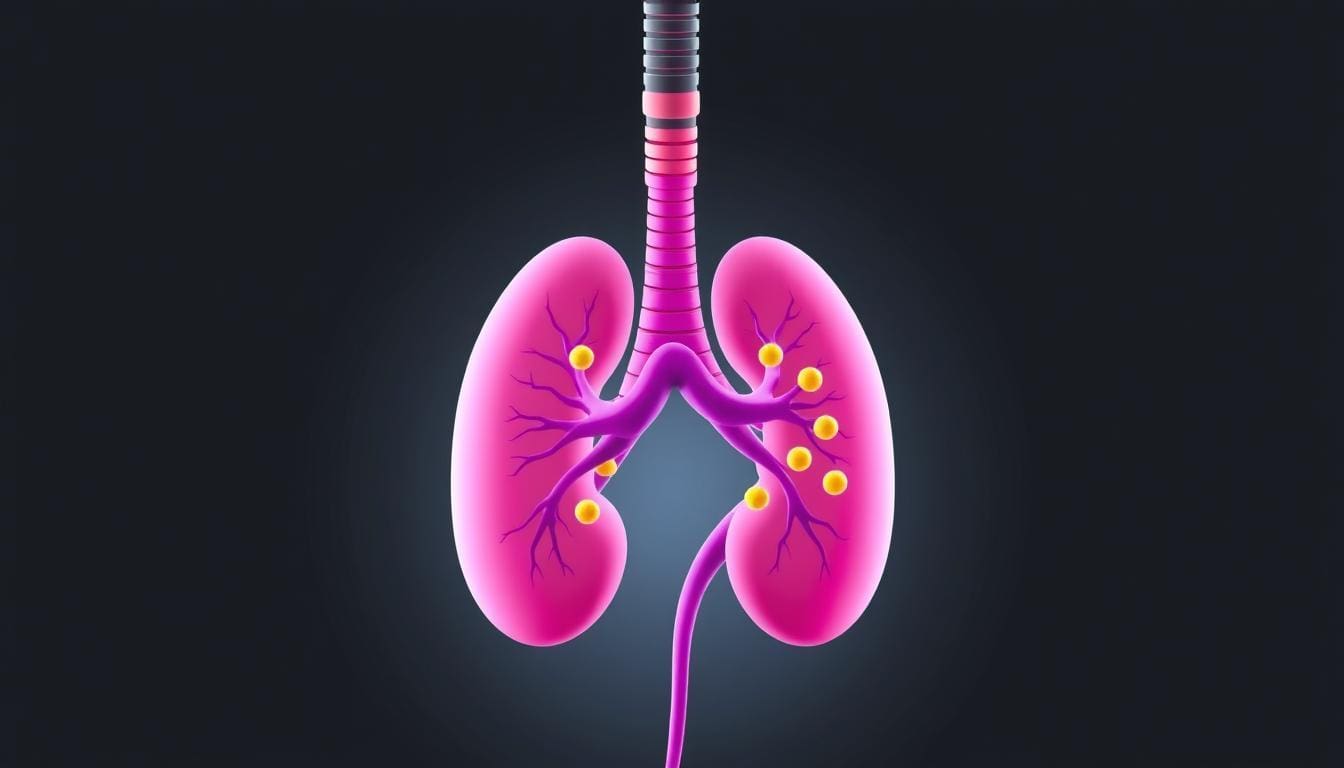Last Updated on October 31, 2025 by Bilal Hasdemir

Knowing the stage of bladder cancer is key to picking the right treatment. The TNM system, made by the American Joint Committee on Cancer (AJCC), is a top choice for checking how far the disease has spread.
A complete guide to CA bladder staging (Bladder Cancer), explaining the TNM classification system for diagnosis and prognosis.
The TNM system looks at three main things: the tumor’s size and depth, nearby lymph nodes, and if the cancer has spread far away. This info helps doctors and patients understand how serious the cancer is. It also helps them decide on the best treatment.
Using the TNM system, doctors can figure out the stage of bladder cancer accurately. This makes it easier to plan a treatment that works well.

It’s key to know about bladder cancer to manage it well. This disease is complex and needs a full approach for diagnosis, treatment, and care.
Bladder cancer is a big health issue globally. It’s more common in some places and groups. People with a family history of bladder cancer and those exposed to harmful chemicals are at higher risk.
The most common bladder cancer is urothelial carcinoma, making up about 90% of cases. It starts in the urothelial cells of the bladder. Other types include squamous cell carcinoma and adenocarcinoma.
To make good treatment plans, knowing bladder cancer well is vital. This means understanding its stages and risk factors.
Healthcare teams can offer better care and support by knowing bladder cancer well. This helps improve treatment results and life quality for patients.

The TNM staging system is key for classifying bladder cancer. It looks at the tumor’s size (T), nearby lymph nodes (N), and if cancer has spread (M). Knowing the stage helps doctors choose the right treatment and estimate how well a patient will do.
T Stage: A Critical Component of Bladder Cancer Diagnosis
The T stage is key in diagnosing bladder cancer. It shows how far the tumor has spread. This helps doctors plan the best treatment.
| Stage | Description |
| — | — |
| Tx | Primary tumor cannot be assessed |
| T0 | No evidence of primary tumor |
| Ta | Non-invasive papillary carcinoma |
| T1 | Tumor invades subepithelial connective tissue |
| T2 | Tumor invades muscle |
| T3 | Tumor invades perivesical tissue |
| T4 | Tumor invades any of the following: prostate, uterus, vagina, pelvic wall, or abdominal wall |
Treatment for bladder cancer varies by stage. Early stages might need surgery. But, more advanced cases might require surgery, chemotherapy, and radiation.
Knowing the T stage helps doctors create a good treatment plan. This can lead to better outcomes for patients.

The N stage in bladder cancer staging is key. It shows if the cancer has reached the nearby lymph nodes. This stage is part of the TNM system, giving vital info on cancer spread.
The N stage has sub-stages from N0 to N3. Each shows a different level of lymph node involvement. Knowing these sub-stages is important for accurate staging and treatment planning.
N0 means no cancer in the nearby lymph nodes. This is good news for patients. It means they have a better chance of recovery compared to those with lymph node cancer.
N1 shows cancer in one lymph node. This is a bit more serious than N0. It might need more intense treatment.
N2 means cancer is in many lymph nodes. This is a bigger problem. It makes treatment harder and could affect the patient’s future.
N3 is when cancer reaches the common iliac lymph nodes. This is a serious stage. It often means a worse outlook for the patient.
The N stage is key in figuring out bladder cancer’s overall stage. It helps decide the best treatment. Knowing about lymph node involvement is critical for a good treatment plan.
We know bladder cancer diagnosis and staging can be tough. Our team is here to offer full care and support during treatment.
By using T, N, and M stages together, doctors can fully understand the cancer. They can then make a treatment plan that fits the patient’s needs.
Distant metastasis is a key factor in bladder cancer treatment and prognosis.
The M stage classification shows how far cancer has spread in the body.
M0 means there’s no sign of cancer spreading to distant parts of the body.
M1 shows cancer has spread to distant parts, affecting treatment and outcomes.
Knowing the M stage is vital for a good treatment plan.
It’s important to know the difference between non-muscle invasive bladder cancer (NMIBC) and muscle-invasive bladder cancer (MIBC). This knowledge helps in planning the right treatment. The T stage helps decide the treatment and how well a patient will do.
Non-muscle invasive bladder cancer (NMIBC) is when tumors stay in the bladder lining. They don’t go into the muscle. These are called Ta, Tis, and T1 tumors. Ta tumors are non-invasive papillary carcinomas. Tis tumors are flat, high-grade lesions. T1 tumors go into the lamina propria but not the muscle.
NMIBC makes up about 75-85% of bladder cancer cases.
“The goal for NMIBC is to stop it from coming back or getting worse,” says current advice. Doctors often use a procedure called TURBT and then intravesical therapy.
Muscle-invasive bladder cancer (MIBC) means tumors have gone into the muscle or beyond. These are T2 or higher. T2 tumors go into the muscle. T3 tumors go into the tissue around the bladder. T4 tumors reach nearby organs or structures.
MIBC is more serious and can spread more easily than NMIBC.
When muscle is invaded, treatment gets more serious. MIBC might need radical cystectomy or a mix of treatments like chemotherapy and radiation. NMIBC, on the other hand, might get less invasive treatments to stop it from coming back.
“The presence or absence of muscle invasion is a critical determinant of the clinical course and treatment of bladder cancer.”
Knowing the difference between NMIBC and MIBC is key for doctors to plan the best treatment. It also helps patients understand their situation better.
Getting the right stage of bladder cancer is key to choosing the best treatment. Doctors use cystoscopy, transurethral resection, and imaging like CT scans and MRI to do this.
Cystoscopy lets doctors see inside the bladder. Transurethral resection removes the tumor for closer look. Imaging checks how big the tumor is and if it has spread.
These steps are vital for finding out the cancer’s stage. They help doctors plan the best treatment.
Knowing the survival rates and prognosis for bladder cancer patients is key. The stage at diagnosis greatly affects the patient’s outlook and survival chances. We’ll look at the five-year survival rates for different stages of bladder cancer, from non-muscle invasive to muscle-invasive and metastatic.
Patients with non-muscle invasive bladder cancer (NMIBC) have a good outlook. The five-year survival rate is often over 90%. This is because NMIBC is usually caught early and hasn’t spread far.
For T2 disease, where the cancer invades the muscle layer, the outlook is less certain. The five-year survival rate is about 70%. This shows a higher risk of the cancer spreading to other parts of the body.
T3 disease, where the cancer goes beyond the muscle layer into surrounding tissue, has a lower survival rate. The five-year survival rate is between 35% and 50%. This highlights the need for early detection and aggressive treatment.
The prognosis for T4 bladder cancer, where the cancer invades nearby organs or structures, or has spread to distant parts of the body, is poor. The five-year survival rate for T4 and metastatic disease is usually between 10% and 20%. This shows the importance of palliative care and supportive treatments.
To better understand survival rates across different stages of bladder cancer, let’s examine the data in the following table:
Stage | Five-Year Survival Rate |
NMIBC (Ta, Tis, T1) | >90% |
T2 | 70% |
T3 | 35-50% |
T4 and Metastatic | 10-20% |
The big difference in survival rates across different stages of bladder cancer shows how critical accurate staging and timely treatment are. By knowing the prognosis for each stage, patients and healthcare providers can make better decisions about care.
Knowing about CA bladder staging is key for making treatment plans and better patient care. The TNM system is used to accurately stage bladder cancer. This helps find the best treatment for each patient.
When bladder cancer is staged right, doctors can make treatment plans that work best. This means patients have a better chance of beating the disease and living well. The TNM system helps doctors understand how far the cancer has spread.
Managing bladder cancer well means knowing its stage. This helps doctors use the right treatments for each patient. The TNM system is very important in this process. It helps doctors make treatment plans that fit each patient’s needs.
The TNM system is a way to stage bladder cancer. It looks at the tumor’s depth, lymph nodes, and if it has spread.
The T stage shows how big the tumor is. It ranges from Ta (small, non-invasive) to T4 (very large, invasive).
The N stage shows if cancer has spread to lymph nodes. It ranges from N0 (no spread) to N3 (spread to common iliac nodes).
NMIBC includes small tumors that don’t go deep. MIBC includes larger tumors that do go deep. MIBC is more serious and needs stronger treatment.
Doctors use cystoscopy and transurethral resection to check for cancer. They also use imaging and new genetic tests for accurate staging.
The stage of bladder cancer greatly affects survival. NMIBC has a high survival rate. But T4 and metastatic disease have a much lower rate.
Accurate staging is key for choosing the right treatment. It helps improve patient outcomes by guiding treatment plans.
Urothelial carcinoma is the most common bladder cancer. It starts in the bladder’s lining.
The M stage shows if cancer has spread. M0 means no spread, and M1 means it has spread, which is worse.
Muscle invasion means the cancer is more aggressive. It requires more intense treatment to manage the disease.
Bladder Staging TNM Classification Guide – https://www.cancer.org/cancer/types/bladder-cancer/detection-diagnosis-staging/staging.html
Subscribe to our e-newsletter to stay informed about the latest innovations in the world of health and exclusive offers!
WhatsApp us